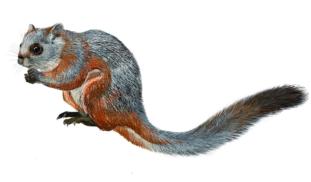Please wait...
About This Project
Given its size, it’s hard to believe that the Namdapha Flying Squirrel is only known with from a single individual collected in Namdapha National Park (NNP), India, in 1981. Our team will go back to NNP with the aim of rediscovering and protecting this Critically Endangered species. We will use spotlighting, arboreal camera bait stations, tree-hole scoping, and fur trapping to search for the species and identify conservation measures to save it.

Browse Other Projects on Experiment
Related Projects
How do polar bears stay healthy on the world's worst diet?
Polar bears survive almost entirely on seal fat. Yet unlike humans who eat high-fat diets, polar bears never...
Uncovering hidden insect diversity associated with a likely undescribed gall-forming midge
Does a likely undescribed species of gall-forming midge (pers. comm. Ray Gagné) on Eriodictyon plants (Yerba...
Macrofungi of the California archipelago
The eight islands of the California Archipelago are a well-studied biodiversity hotspot — but we know almost...




